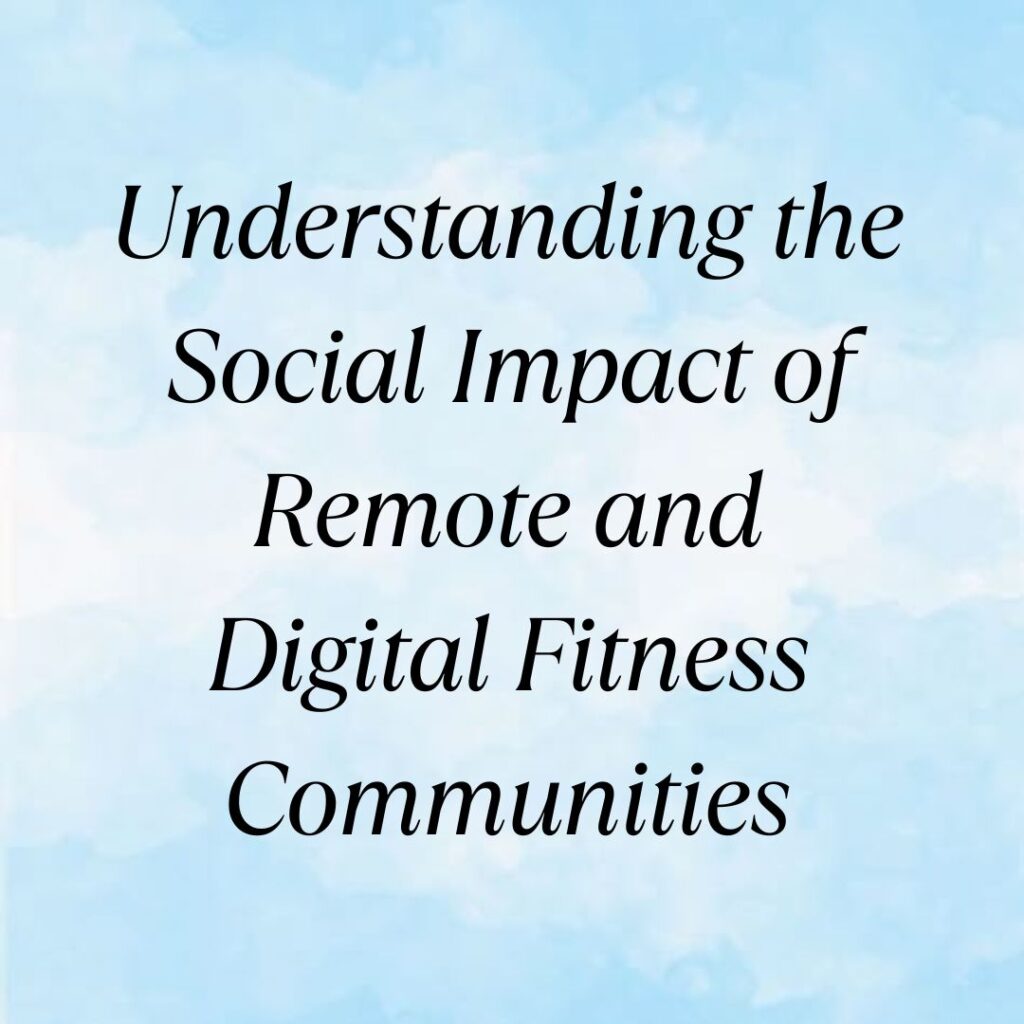In recent years, the landscape of fitness and community has undergone a profound transformation with the rise of remote and digital fitness communities. These communities, facilitated by technology and connectivity, have not only changed how people exercise but also how they socialize, support each other, and maintain their overall well-being. This article delves into the social impact of these communities, exploring their benefits, challenges, and their relevance in today’s world.
The Evolution of Fitness Communities
Traditional fitness communities were often localized, centered around gyms, fitness clubs, or local workout groups. While effective in fostering physical health, they were limited by geographical boundaries and scheduling constraints. The advent of digital platforms and technology-enabled fitness solutions has disrupted this model, offering unprecedented accessibility and flexibility.
Benefits of Remote and Digital Fitness Communities
Accessibility and Inclusivity
One of the most significant advantages of remote and digital fitness communities is their accessibility. Individuals no longer need to live near a specific gym or fitness center to participate actively. This accessibility extends beyond physical proximity to include individuals with disabilities or those who face other barriers to traditional fitness environments.
For example, platforms like Peloton have democratized access to high-quality workouts by streaming live and on-demand classes to homes worldwide. This inclusivity has empowered individuals to engage in fitness activities comfortably from their own spaces, promoting a sense of belonging and community.
Flexibility and Convenience
Digital fitness communities offer unparalleled flexibility and convenience. Participants can choose from a variety of workout styles, instructors, and timings that suit their personal schedules. This flexibility eliminates the need to adhere to rigid class schedules or commute to a gym, thereby saving time and reducing barriers to regular exercise.
For instance, apps like Nike Training Club and Daily Burn provide users with on-the-go workouts that adapt to individual preferences and fitness levels. Such flexibility not only accommodates busy lifestyles but also encourages long-term adherence to fitness routines.
Community and Support
Beyond physical exercise, remote and digital fitness communities foster a sense of belonging and support. These platforms often integrate social features such as live chats, forums, and virtual challenges, enabling participants to connect, motivate each other, and share their fitness journeys.
For example, Strava, a popular fitness app among runners and cyclists, allows users to join clubs, share achievements, and encourage fellow athletes through comments and kudos. This virtual camaraderie simulates the motivational aspects of traditional fitness groups, promoting accountability and enhancing overall engagement.
Social Impact in Contemporary Context
Wellness and Mental Health
The COVID-19 pandemic underscored the importance of digital fitness communities in maintaining overall wellness and mental health. With lockdowns and social distancing measures in place, many turned to online platforms for their fitness needs. This shift not only sustained physical health but also provided a crucial outlet for stress relief, social interaction, and emotional support during challenging times.
Research has shown that regular exercise can alleviate symptoms of anxiety and depression while improving mood and cognitive function. By facilitating access to virtual workouts and supportive communities, digital platforms have played a pivotal role in promoting holistic well-being amid global uncertainty.
Sustainability and Environmental Impact
Another notable impact of remote fitness communities is their contribution to sustainability. By reducing the need for commuting to gyms and fitness centers, these platforms help minimize carbon emissions and environmental footprint. Moreover, the shift towards digital workouts reduces reliance on physical infrastructure and resources, aligning with broader sustainability goals.
Challenges and Considerations
Despite their numerous benefits, remote and digital fitness communities face challenges such as digital fatigue, privacy concerns, and the potential for misinformation. Maintaining engagement and fostering genuine connections in virtual settings also requires ongoing innovation and adaptation from platform developers and fitness instructors.
Conclusion
In conclusion, remote and digital fitness communities have revolutionized the way individuals approach fitness and community engagement. By combining accessibility, flexibility, and social connectivity, these platforms empower users to prioritize their health, connect with like-minded individuals, and overcome geographical barriers. As we navigate an increasingly digital world, the social impact of these communities continues to evolve, offering new opportunities for personal growth, community support, and collective well-being.
Whether you’re joining a virtual yoga class, participating in a global fitness challenge, or connecting with fellow runners across continents, the transformative power of remote and digital fitness communities is undeniable. Embracing these platforms not only enhances individual fitness journeys but also reinforces the importance of community and connection in our modern lives.







